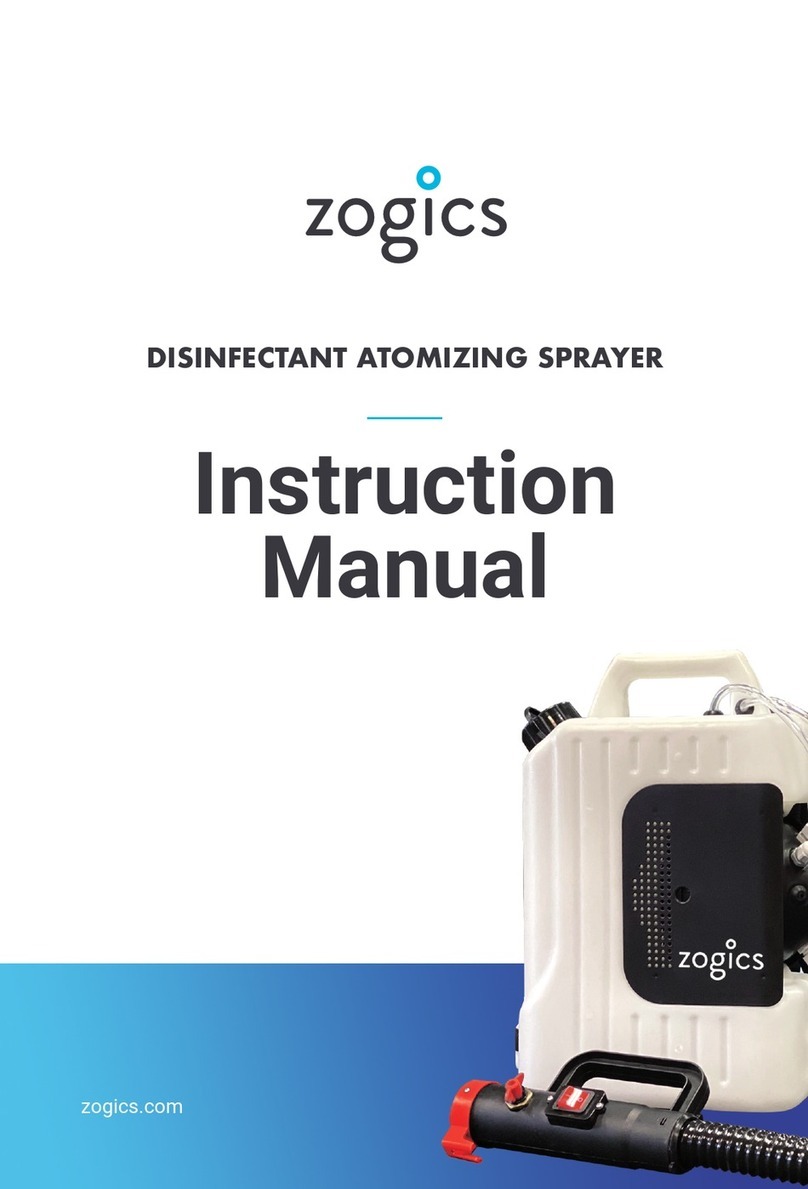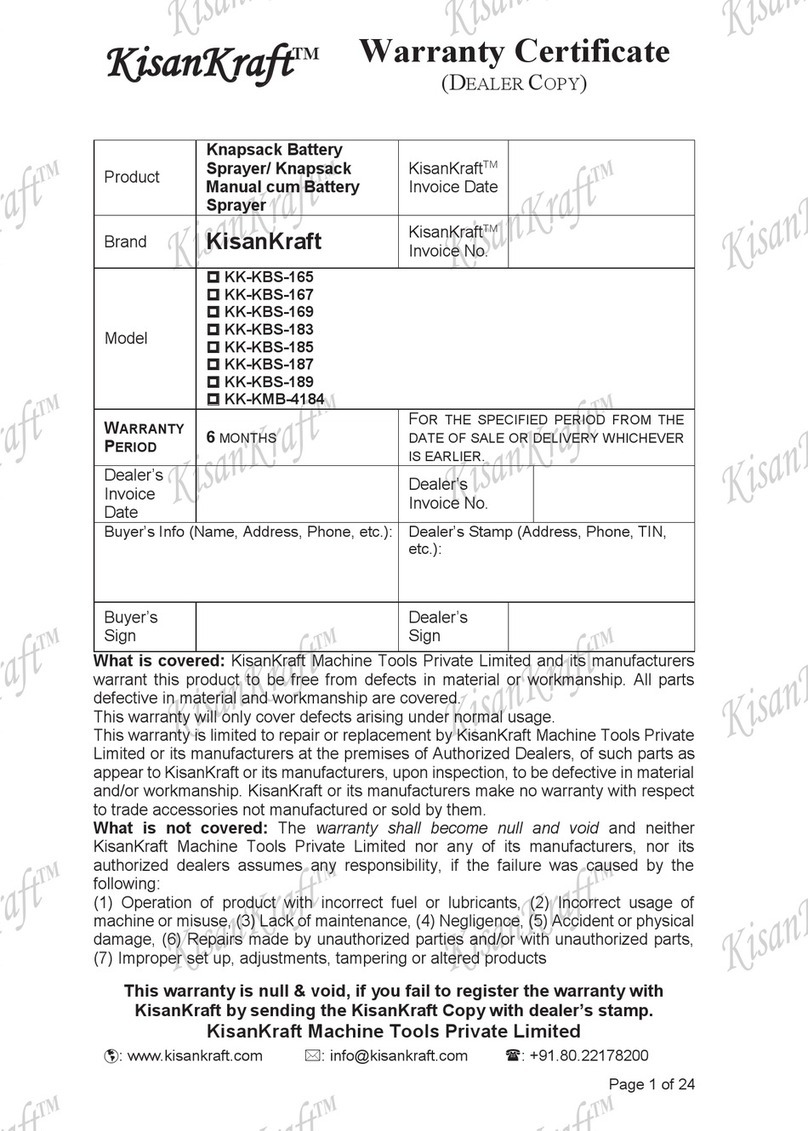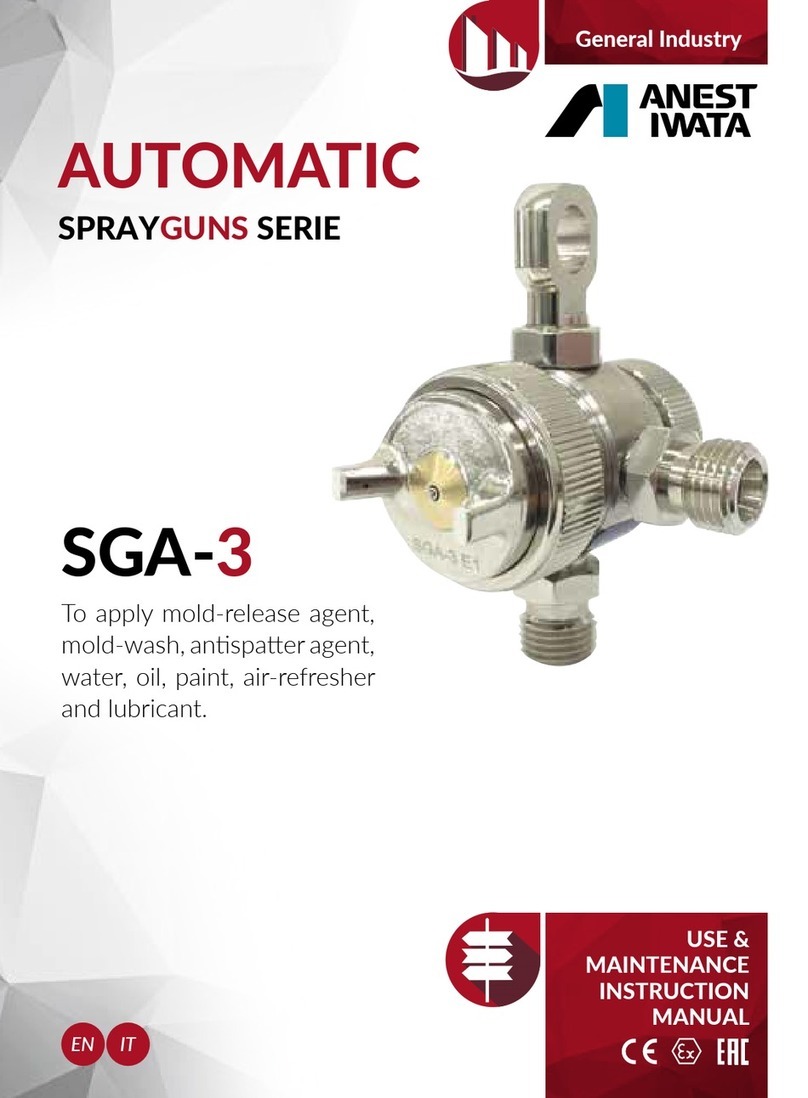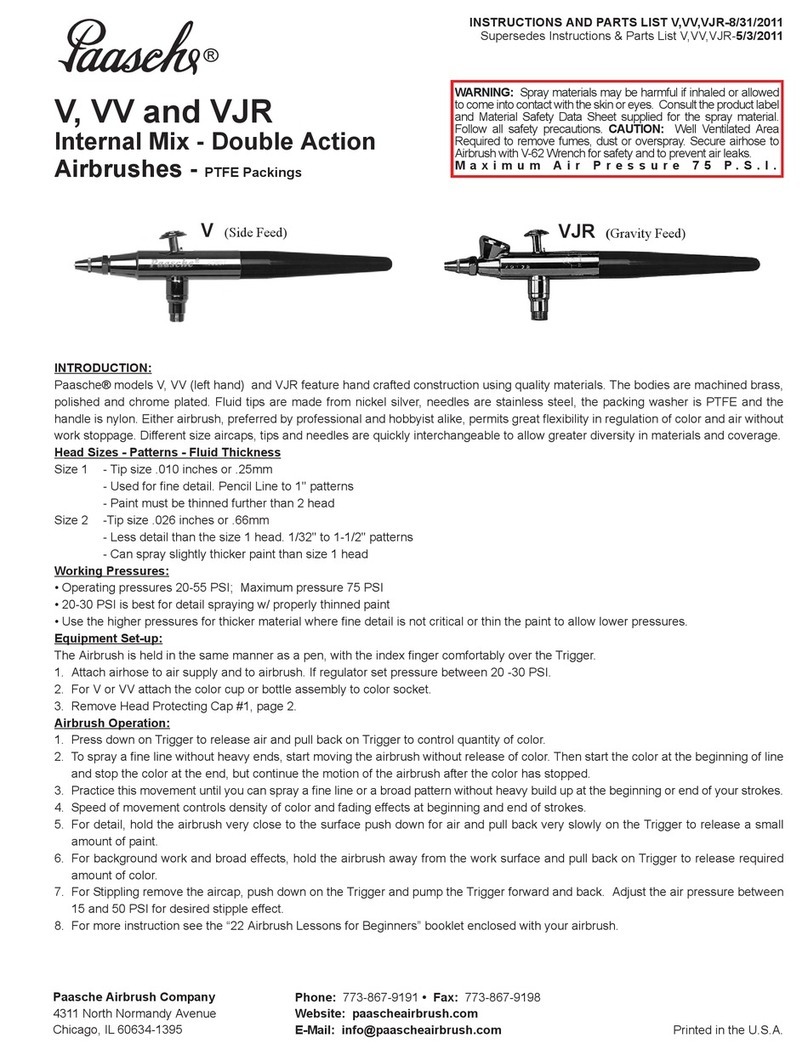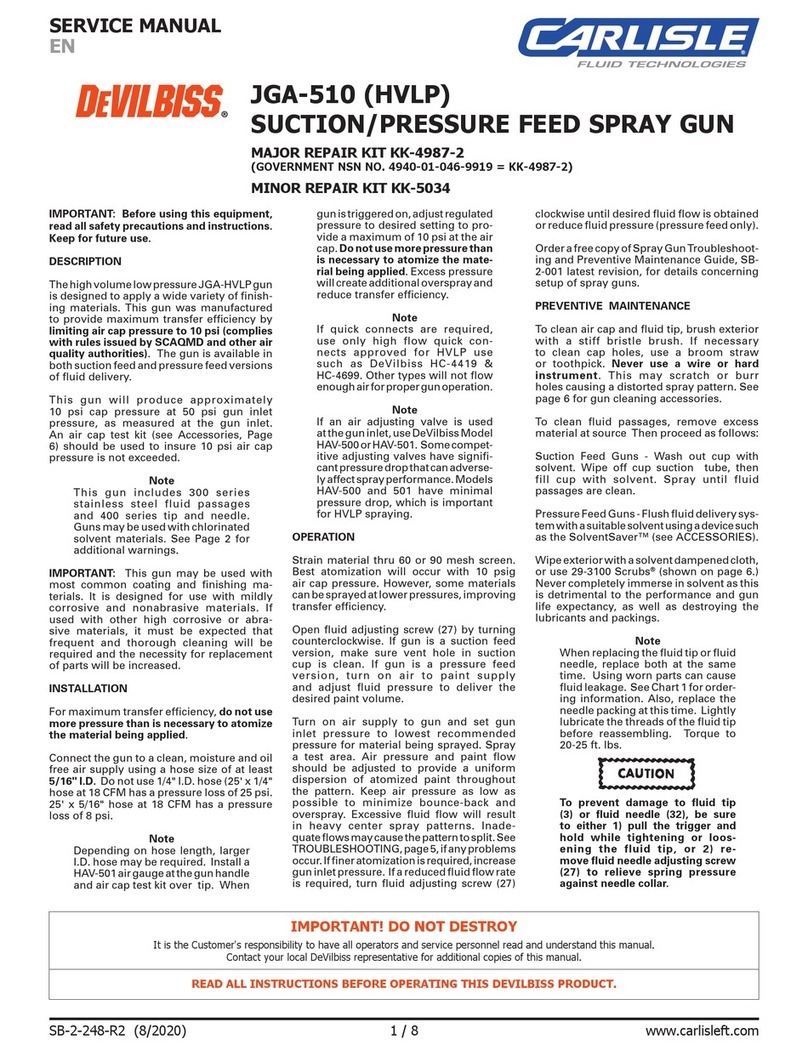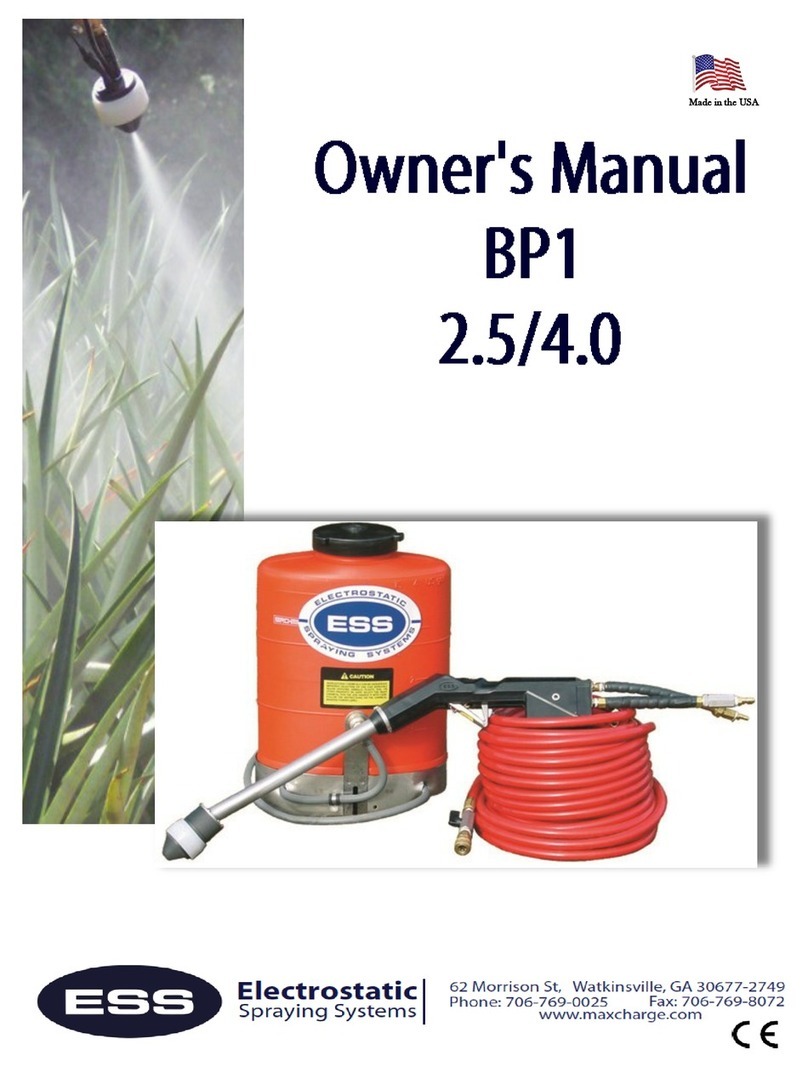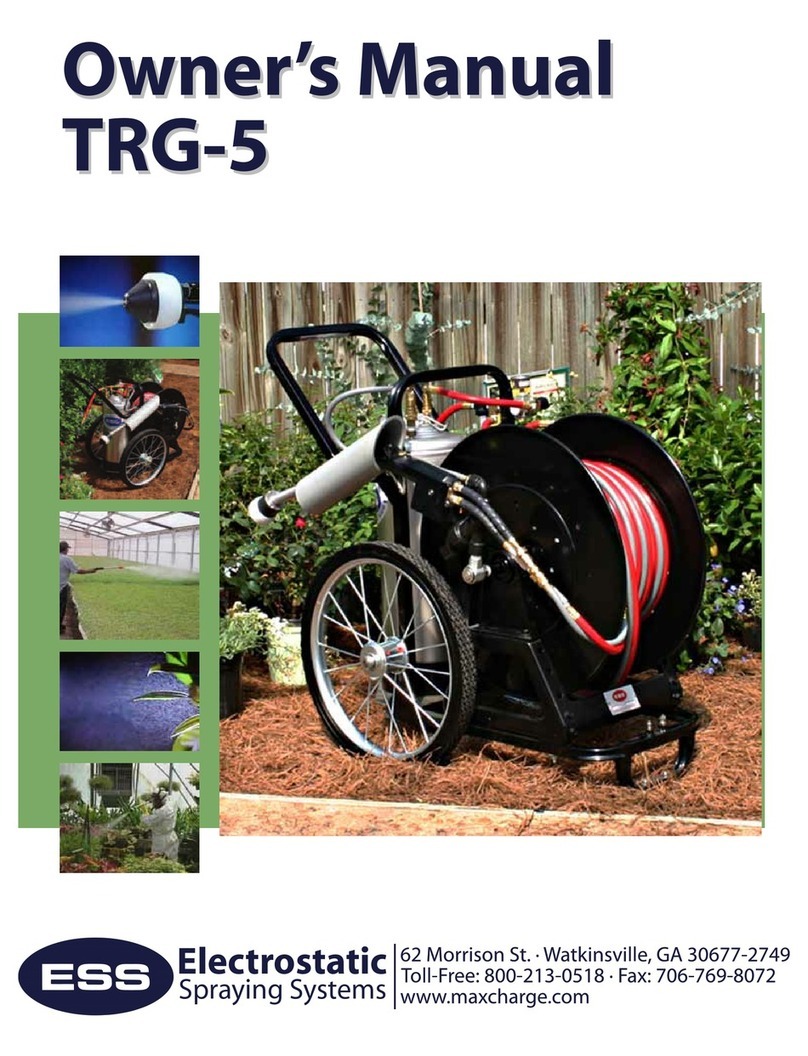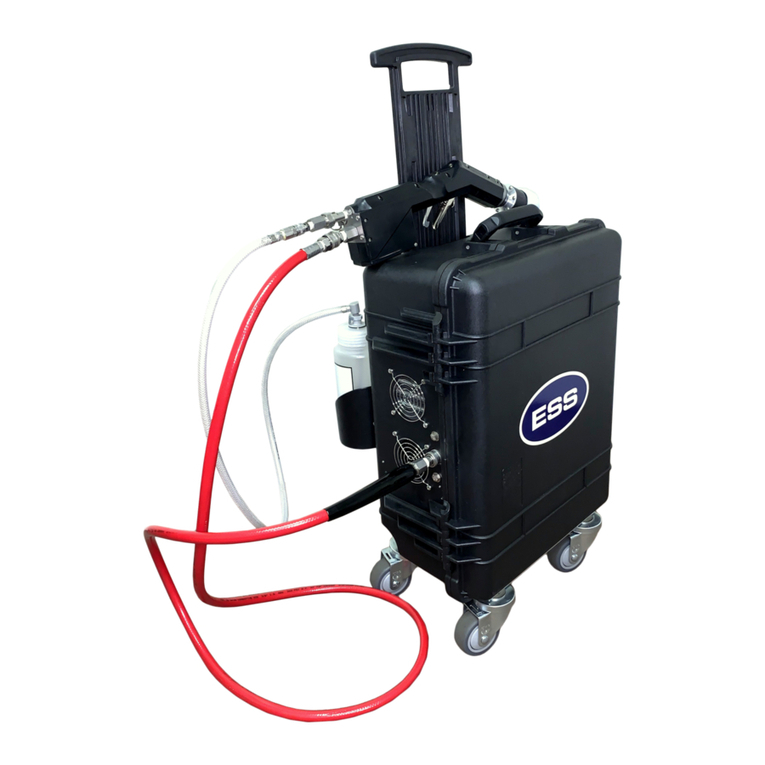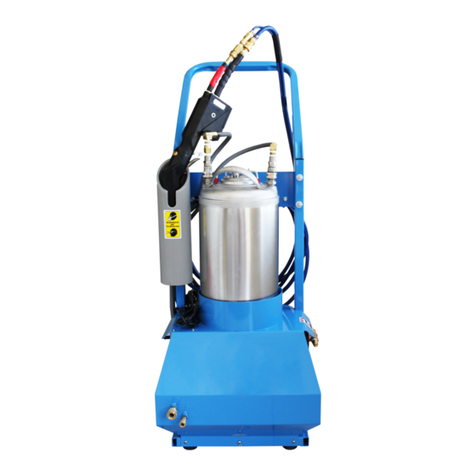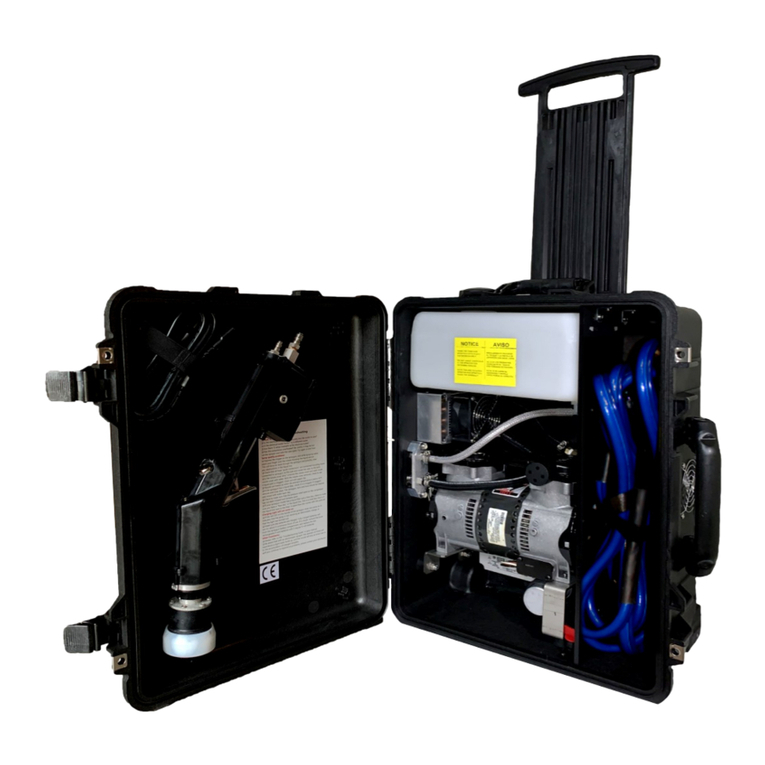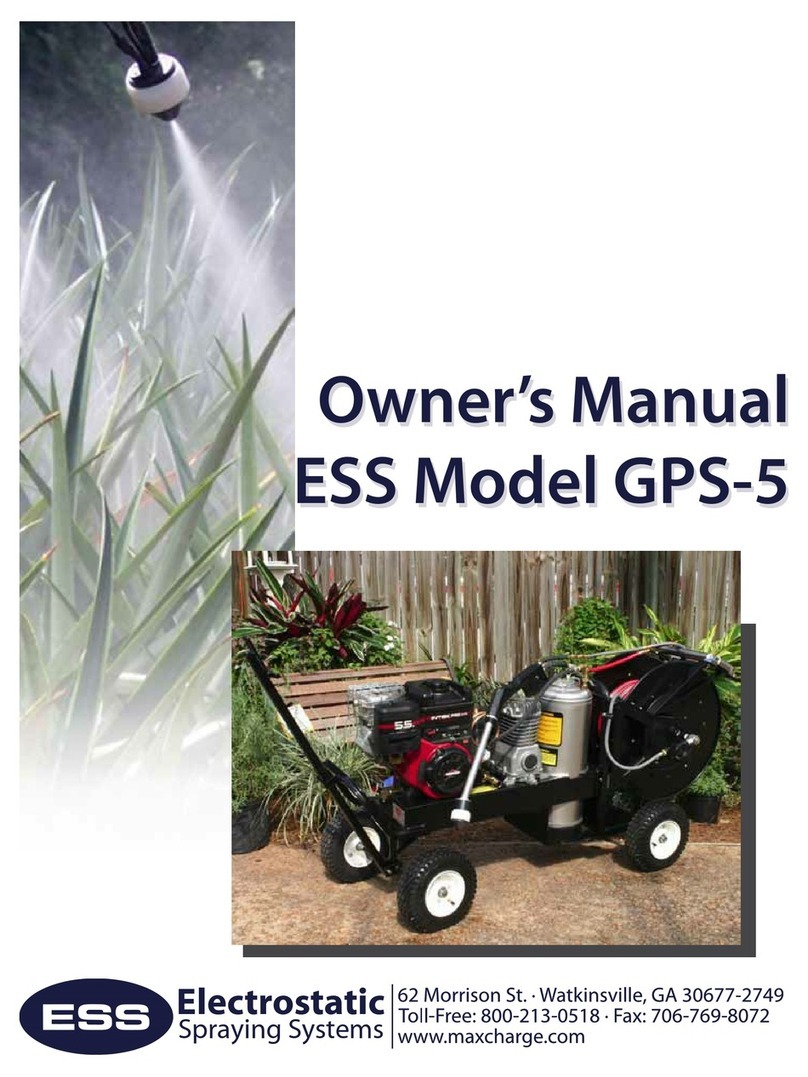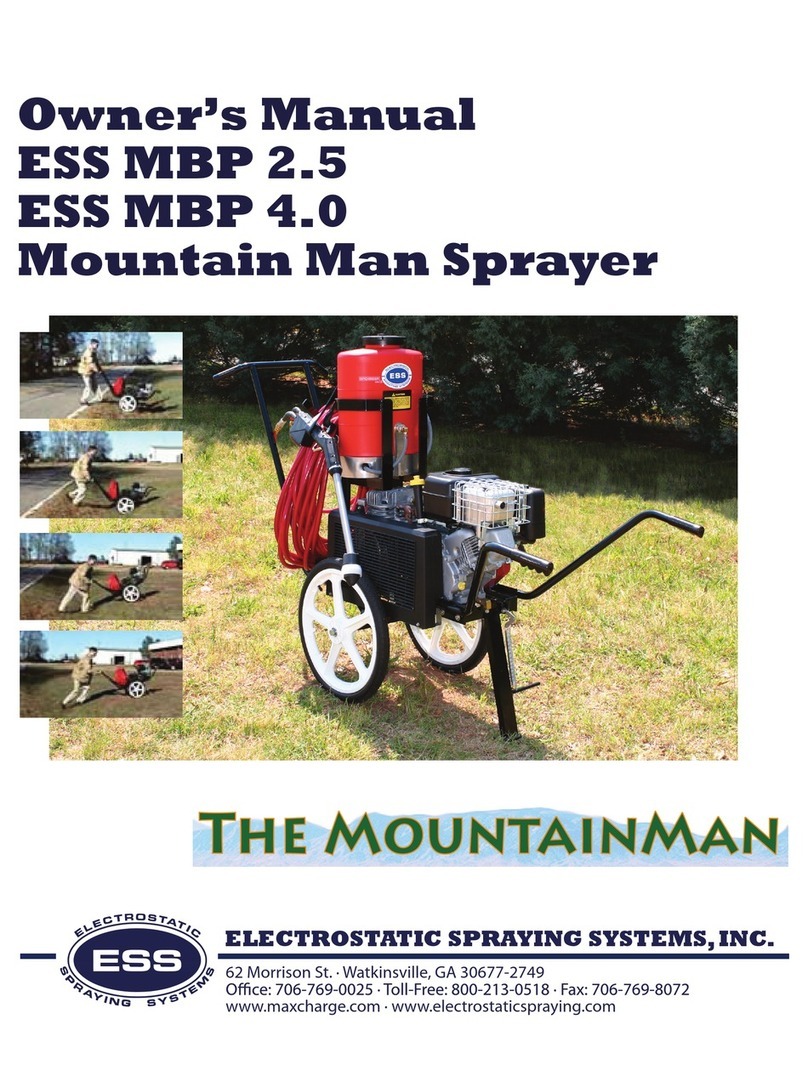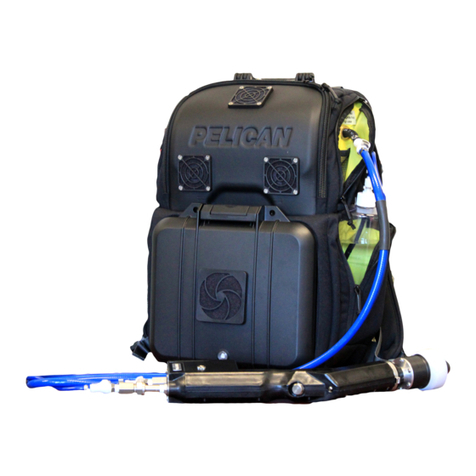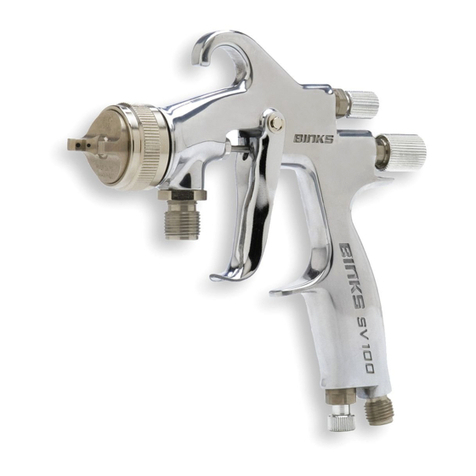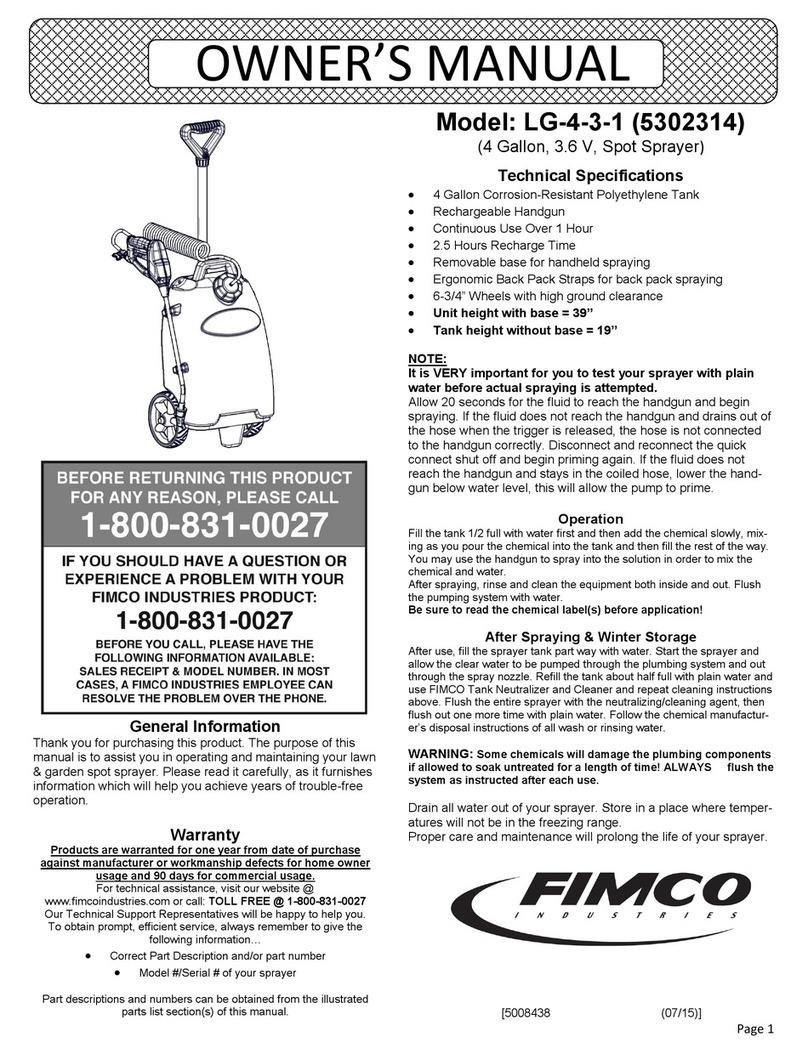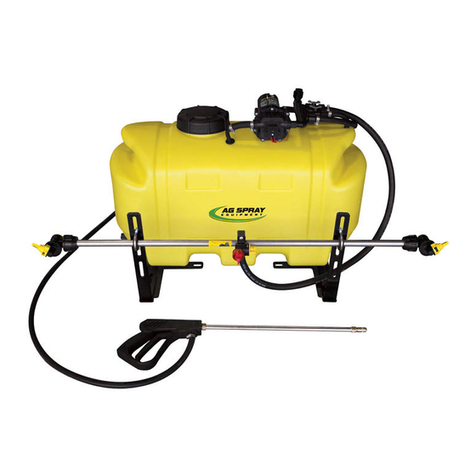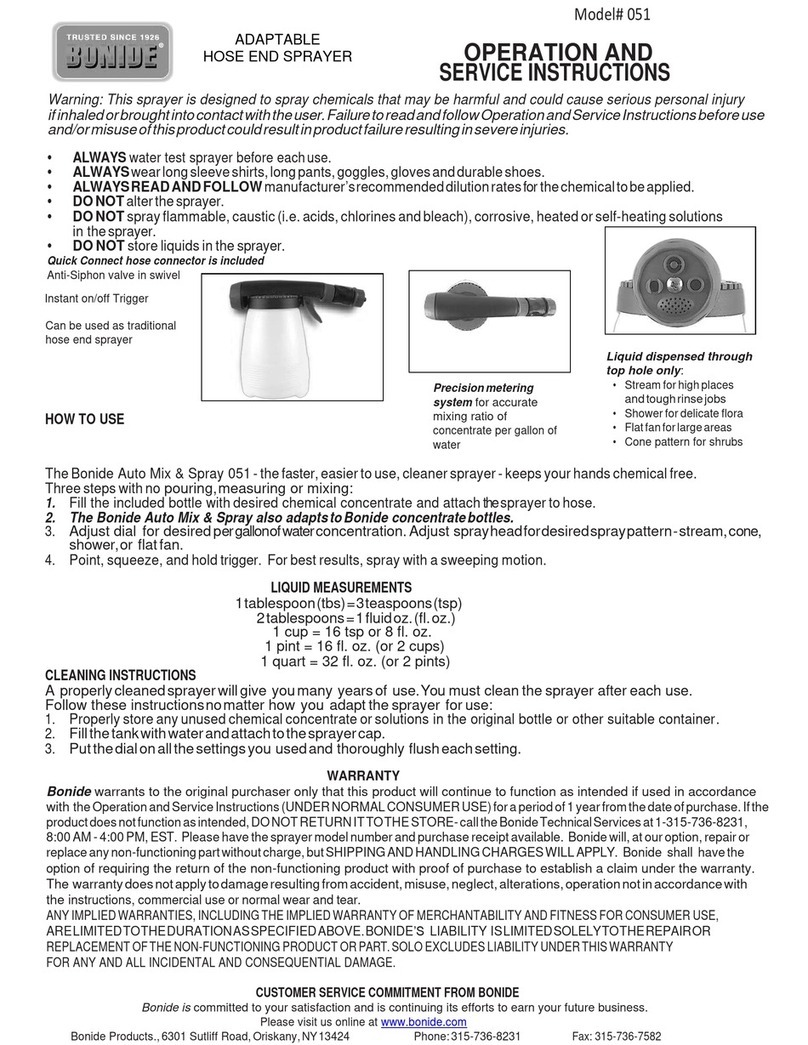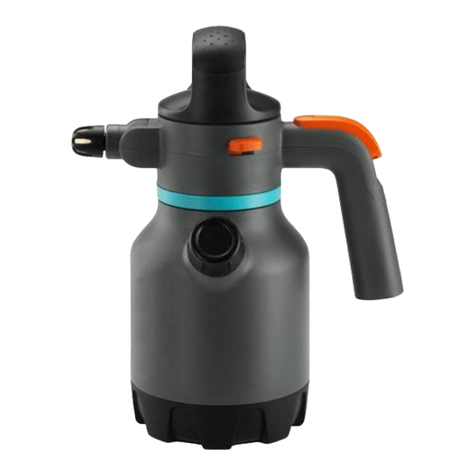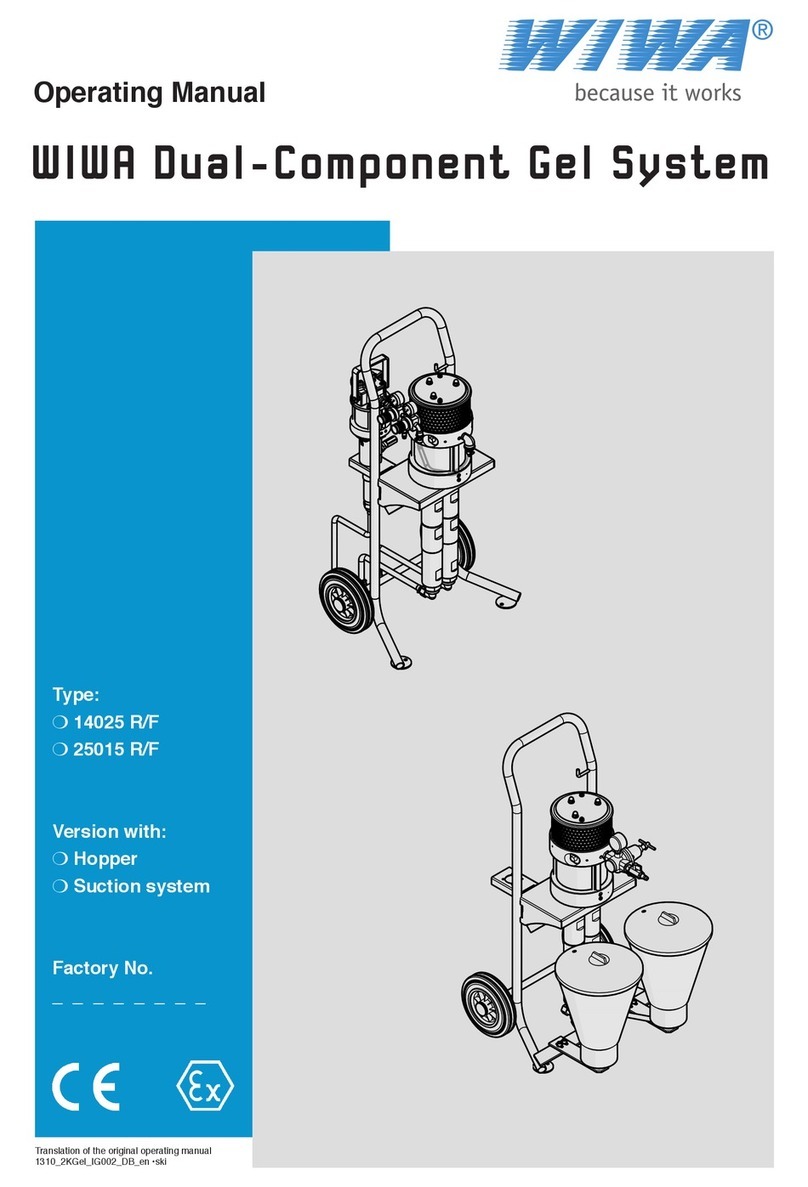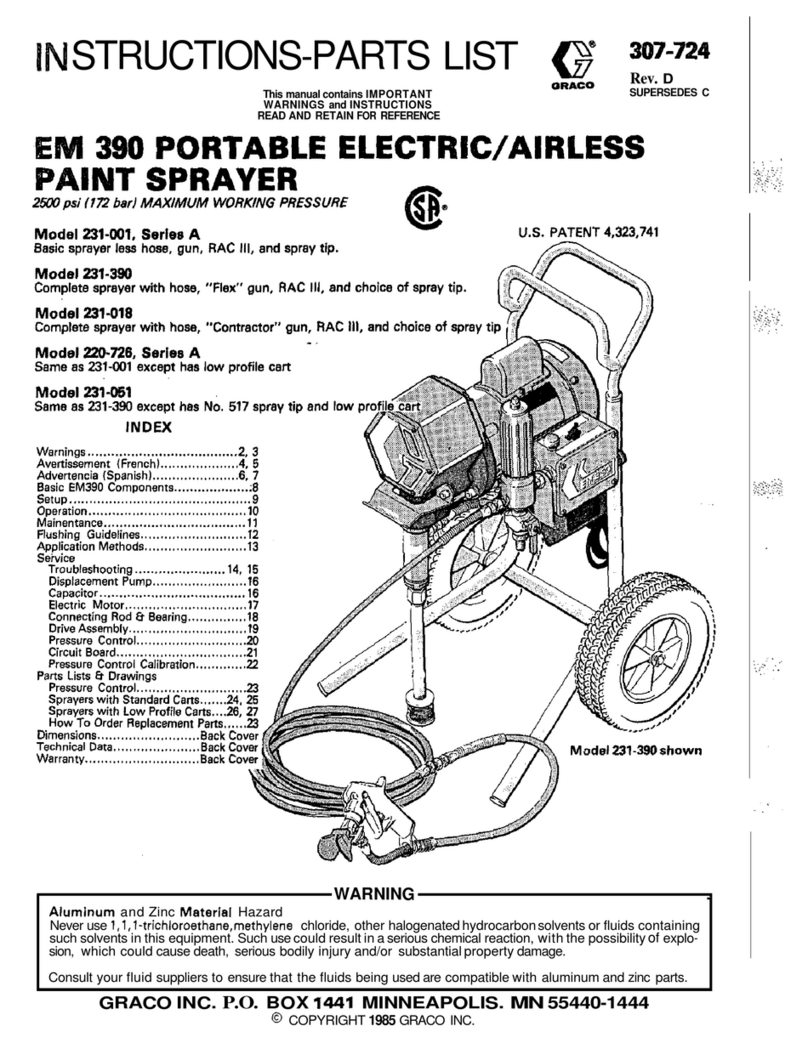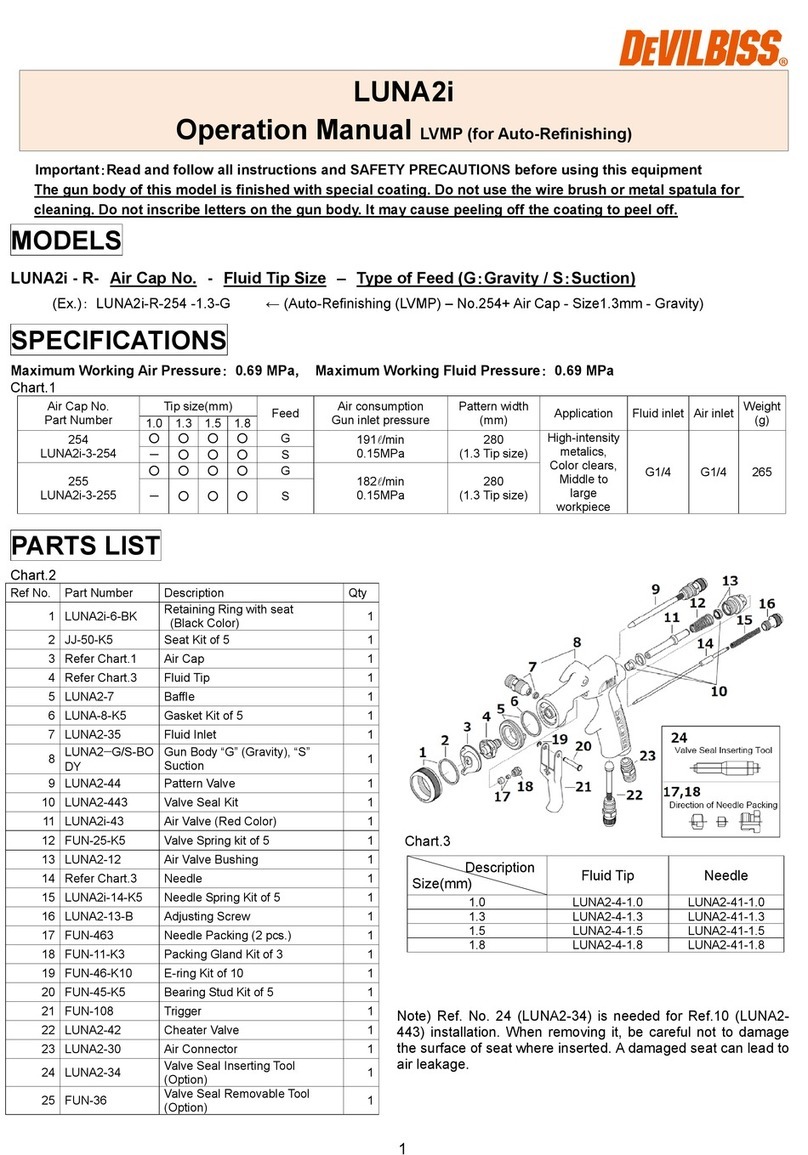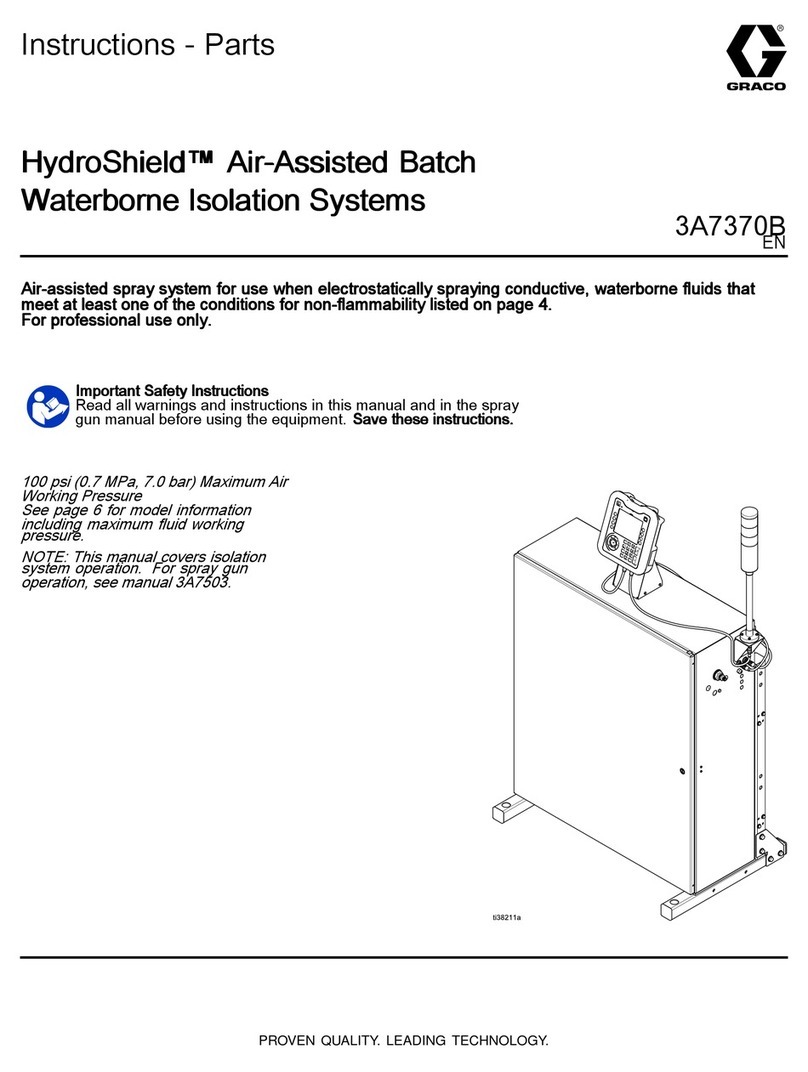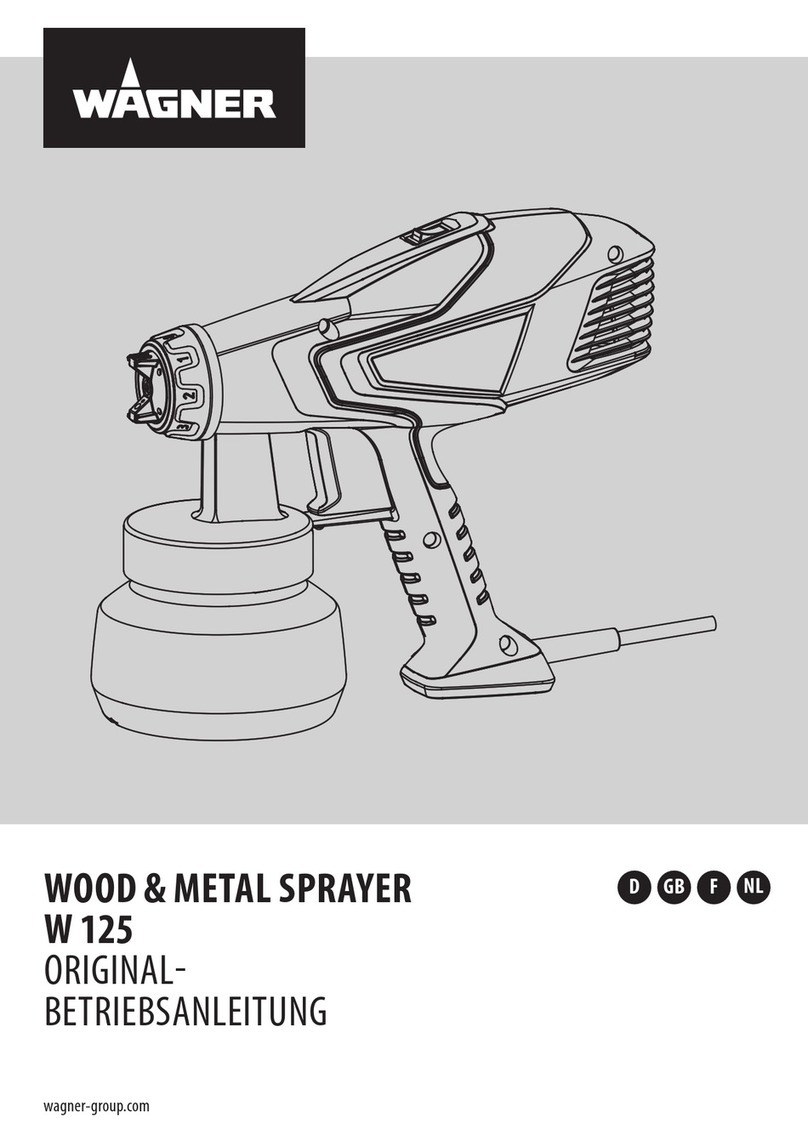
iii
ESS MAXCHARGE™ SPRAYGUN OWNER’S MANUAL
TABLE OF CONTENTS
Overview of the ESS Spraygun Air-assisted Electrostatic Sprayer..... 1
Safe operation of the Spraygun ..................................................................... 2
Operator’s responsibility........................................................................... 2
Safety precautions ...................................................................................... 2
Chemical safety precautions................................................................... 2
About the low-voltage system of the MaxCharge Spraygun ............. 3
Features of the Spraygun ................................................................................. 5
Operating Instructions ...................................................................................... 4
After spraying ............................................................................................... 4
Spraygun Maintenance Schedule ................................................................. 4
REFERENCE SECTION
Quick connects..................................................................................................... 5
Spraygun ................................................................................................................ 6
Air lter............................................................................................................ 6
Trigger ............................................................................................................. 7
Liquid lter assembly......................................................................................... 8
Nozzle assembly .......................................................................................... 9
Pre-spray check..................................................................................................10
Post-spray check................................................................................................10
The batteries .......................................................................................................11
Yearly spraygun service...................................................................................12
Spraying with your ESS sprayer....................................................................13
Siphoning.............................................................................................................14
Alternate sprayer guns ....................................................................................15
Spraying with optional sprayguns ..............................................................15
A note about operating temperatures ......................................................16
Trouble-Shooting Guide.................................................................................16
Spraygun service parts (drawing)................................................................17
Spraygun service parts (key) .........................................................................18
Flow disk chart ...................................................................................................18
ESS Warranty .......................................................................................................19
Warranty card............................................................................................19a
Spraygun repair/Yearly service return form.............................................21
Your Spraygun may appear slightly
dierent than the photographs and
drawings in this manual. We at ESS are
constantly listening to customer input
and we make frequent improvements to
our spraygun designs.
